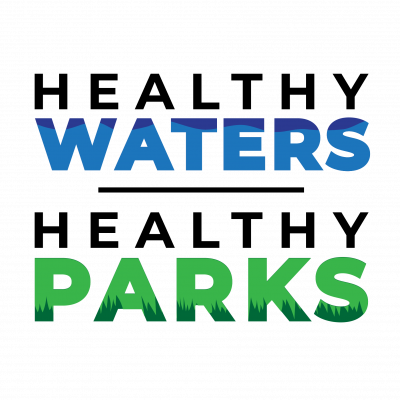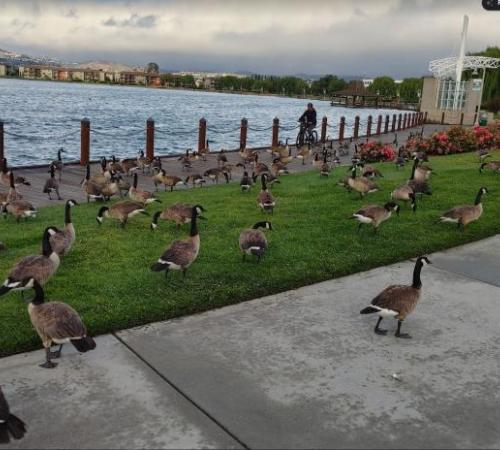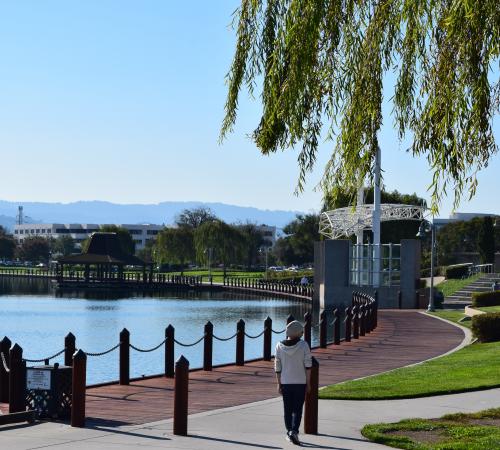Healthy Waters, Healthy Parks
Healthy Waters, Healthy Parks is an initiative highlighting the City’s long history of keeping its parks and waterways clean and healthy. However, the City has received concerns about the number of Canada geese and the excrement they leave on Foster City beaches, playfields, parks, and walkways, in addition to the City’s waterways. Heavy concentrations of goose droppings contain bacteria that can degrade the lagoon's water quality, creating a potential public health hazard and diminishing the community's ability to enjoy outdoor recreational amenities. Learn more about the Healthy Waters, Healthy Parks initiative below. Click here to view our Healthy Waters, Healthy Parks FAQ
CLICK HERE FOR THE LATEST UPDATES
- July 18, 2022 - City Council to review a progress update report on geese population management and to provide policy direction on proposed mitigation strategies.
- April 23, 2022 - On Saturday, April 23, thirty-five (35) clean-up volunteers picked up ten (10) bags of trash from eight (8) of Foster City’s Parks. Clean-up volunteers collected garbage, recycling, and cigarette butts. Assisting the volunteers with safety and equipment were Community Emergency Response Team (CERT) Members from the San Mateo Consolidated Fire Department. The City wishes to thank ALL volunteers who helped keep Foster City healthy and clean! Click here to view pictures of the event.
- January 18, 2022 - City Staff updated City Council on the Canada Geese Population Mitigation Plan and Progress on Outreach and Permits
- November 1, 2021 - City Council provided direction for staff to move forward with the Canada Geese Population Mitigation Plan
- September 20, 2021 - City Council received a technical memo documenting monitoring results for evaluation of sources of bacteria in the Foster City Lagoon focusing on the beach at Erckenbrack Park, and provided further direction on next steps for geese mitigation and improving water quality.
- August 16, 2021 - City Council received a report on water quality in the lagoon and geese population management, and provided further direction.
Press Releases:
- June 23, 2022 - Foster City Addressing Lagoon Water Quality
- May 25, 2022 - Rent a Kit and Help Keep Foster City's Parks Clean
- April 1, 2022 - Join Your Friends and Neighbors for Foster City’s Earth Day Community Clean-Up
- February 15, 2022 - Work Underway to Clean Algae Bloom in Foster City Lagoon
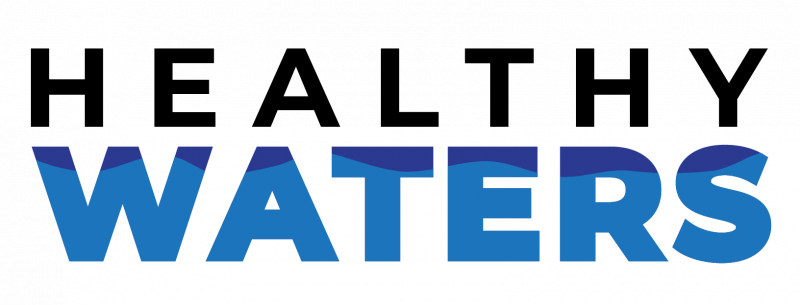
Foster City's lagoon meanders five miles (covering a surface area of more than 200 acres) throughout the City’s neighborhoods. The Foster City Lagoon system is designed as a drainage detention basin to successfully withstand a storm of such severity that it is likely to occur only once each century. The water in the lagoon consists of a mixture of water from the San Francisco Bay and stormwater collected throughout the City through curb inlets, catch basins, and drains. The lagoon is also a recreational amenity enjoyed by those who live, work, and play in Foster City. Click here to learn more about the Foster City Lagoon.
CLICK HERE FOR MORE INFORMATION ABOUT HEALTHY WATERS
In February of 2021, the City hired Environmental and Public Health Engineering (or EOA) to:
- Investigate the source of bacteria detected in the lagoon; and
- Confirm sample results collected by the County Department of Environmental Health Services (EHS); and
- Recommend strategies to control elevated levels of Enterococci (or E. coli). Note: E.coli is the sole indicator now used by the State Water Resources Control Board threshold to protect recreational uses from the effects of pathogens in brackish and marine waters.
The sampling schedule included the end of the wet season, with the possibility of storm events occurring during or before sampling and extended through much of the summer season.
⇒ Thus far, the samples have indicated no traces of human DNA, confirming that the City's wastewater collection system is not the source of the elevated E.coli.
⇒ Goose and seagull DNA markers in the samples imply that the elevated levels result from bird feces, especially from the population of geese that inhabit Foster City’s waters.
⇒ While still concerning, wildlife sources of fecal material generally pose less of a threat to the health of swimmers.
⇒ The testing also implies a correlation between elevated fecal material concentrations from geese and the quality of the lagoon water.
In June of 2021, Heal the Bay released their thirty-first annual Beach Report Card which assigns A-to-F letter grades for 500 California beaches based on levels of fecal-indicator bacterial pollution in the ocean measured by County health agencies. Three beaches located in Foster City were ranked among the top 10 most polluted in California.
CLICK HERE TO LEARN MORE ABOUT LAGOON WATER QUALITY
At its Regular Meeting on August 16, 2021, the City Council received an update on water quality in the lagoon and geese population management. It was noted that two beaches, Gull and Marlin, have lower bacteria levels than reported in the 2020/2021 “Beach Bummers list“ and are now open for swimming. Water samples taken throughout the lagoon were comparable to water quality found in the San Francisco Bay.
In September 2021, City staff received the technical memorandum summarizing the results of the bacteria study from Environmental and Public Health Engineering (EOA). Additionally, the Public Works Department updated City Council on Lagoon Monitoring Report to study the sources of bacteria on the beach of Erckenbrack Park. City Council approved water testing through the end of March 2022. The City and its consultant will continue to collect samples to validate the consistency of test results with the County’s sampling program.
Additional water quality measures include:
Increased Water Movement and Aeration - Foster City's Public Works Department have taken measures that have improved water movement in the lagoon through increased aeration. Aeration helps to dissipate concentrations of bacteria and enhance the quality of water. City staff will maintain these measures and continue to seek opportunities to improve water aeration.
Lagoon System Improvements – Systems for improving aeration of the lagoon water would address water quality long term. Aeration can be achieved through air infusion into the lagoon by surface agitation from a fountain or spray-like device. Staff is researching strategies and devices for maintaining a higher level of aeration, specifically in the area of Erckenbrack Park and other similarly situated areas on an ongoing basis.
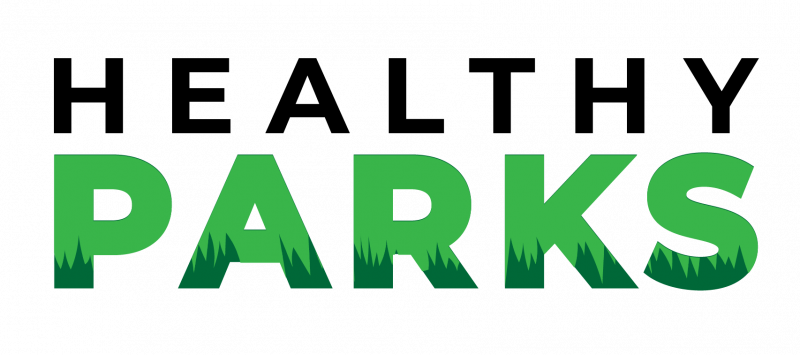
Parklands in the City of Foster City make up much of the City’s open space resources, with 24 parks throughout. The City boasts over 160 acres of park and open space land including bike paths, dog exercise areas, numerous soccer and youth baseball fields, tennis courts, basketball courts, picnic facilities, bocce ball courts, walkways and pedway, and a wildlife refuge. Click here to learn more about Foster City's 24 parks.
CLICK HERE FOR MORE INFORMATION ABOUT HEALTHY PARKS
The Foster City's Parks Division has a long history of carefully and consistently removing Canada Geese dropping in the City's parks and walkways. Foster City's parks are the ideal habitat for the birds, especially during molting season. Molting season is when the birds shed their feathers and cannot fly as a result. It is during this time that increased populations tend to gather at the City’s parks and beaches. Higher concentrations of goose fecal material at the parks and beaches directly result from their 6-8 week molting period in Foster City. In the parks, they can have a constant food source (grass), freshwater, no predators, and clear lines of sight should they feel the need to escape to the water. The City has discontinued the use of power washing to clean park areas and pathways where run-off cannot be diverted from the lagoon. Instead, City staff is utilizing more time-intensive raking and sweeping methods for feces removal. The City is currently researching suitable equipment that would allow for the more efficient and often cleaning of the City's walkways.
A 2021 census count has indicated that the Canada goose population in Foster City in June 2021 was 323 individual birds. This total is almost double the June 2020 count of 181 individual birds and is well above the highest number that has been observed over the last four (4) annual census counts. This influx is not unique to Foster City. The region is experiencing growth in the number of birds, although Foster City has been the most impacted. It is unknown exactly why there was such a heavy increase. Although the geese are a year-round problem, they are an even bigger nuisance during their molting season, generally from early June through August.
Click here for more information about geese population management.
